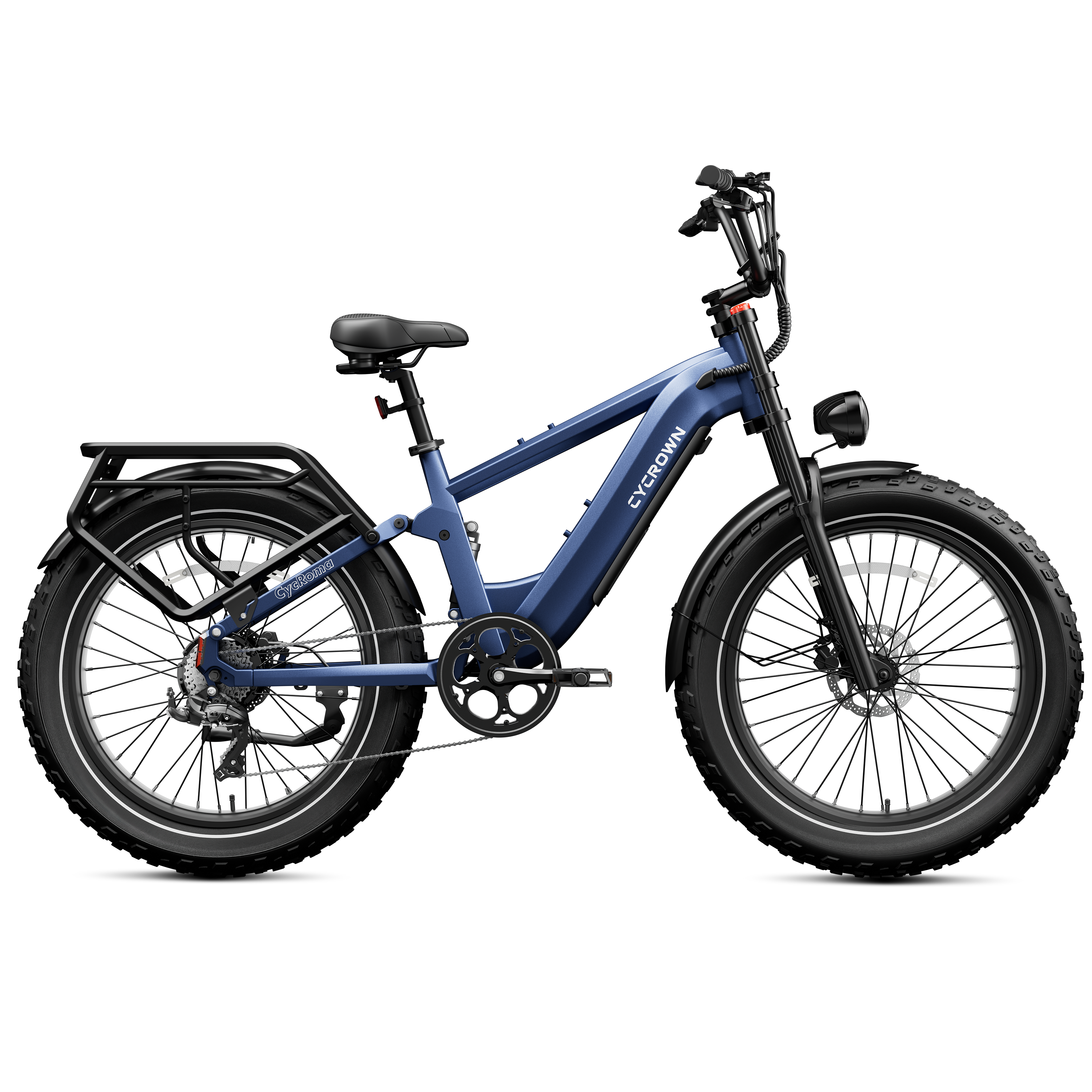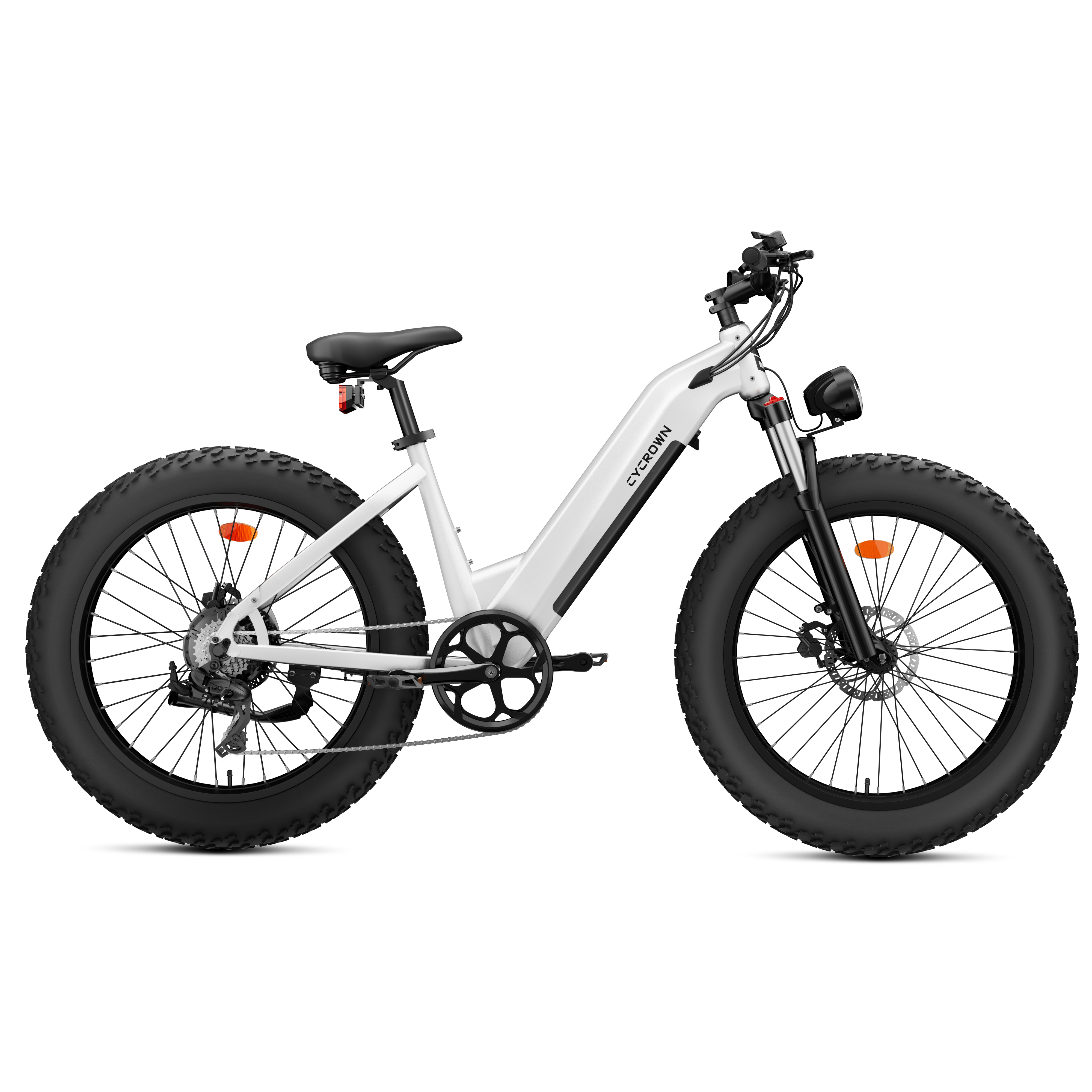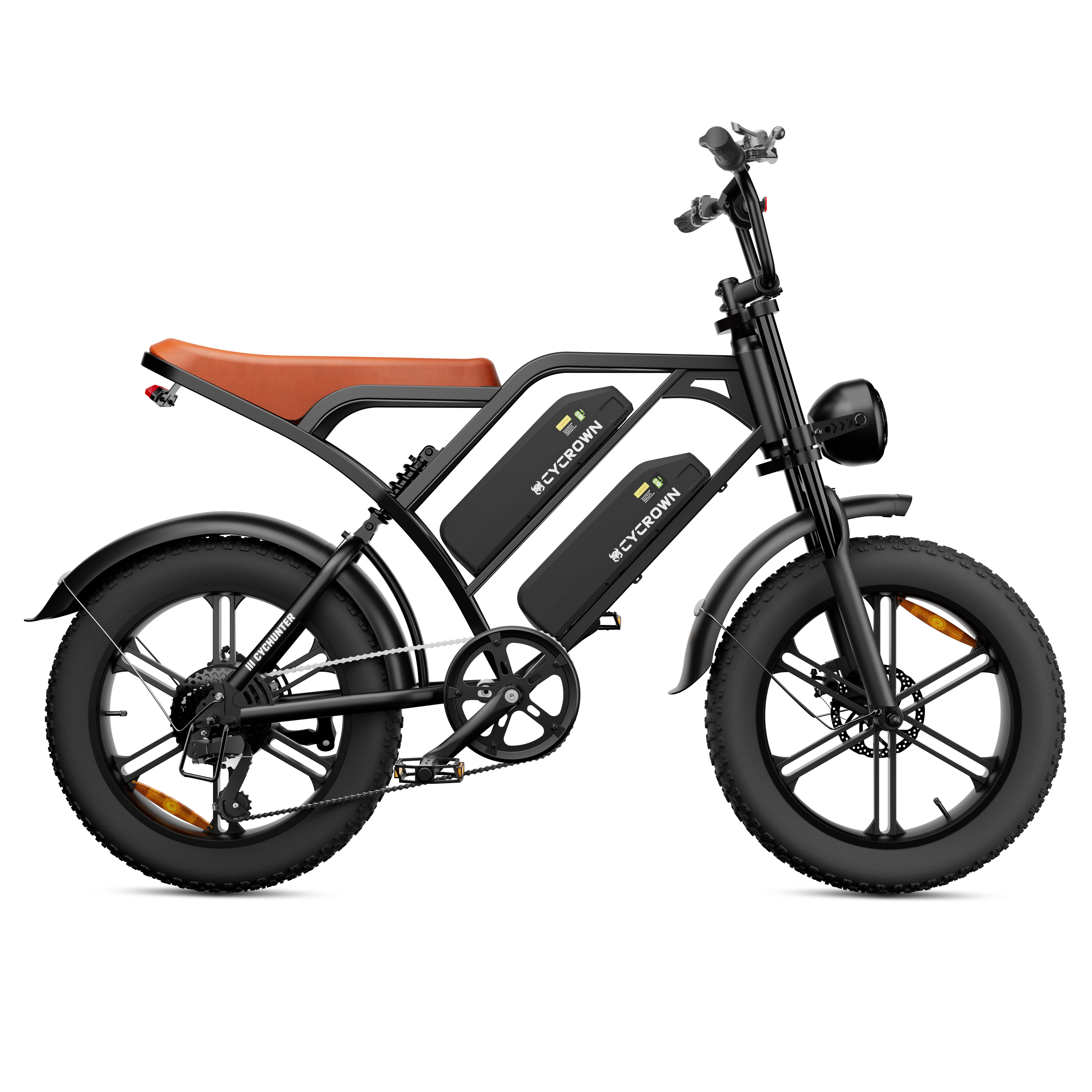E-bikes have become increasingly popular in recent years, offering an eco-friendly and efficient mode of transportation. However, there is often confusion about whether e-bikes are allowed on bike trails. The answer to this question varies depending on many factors, including regional regulations and the type of trail in question.
If you're wondering whether e-bikes are allowed on bike trails, the answer is not a simple yes or no. In the United States, e-bike regulations are determined at the state and local level, meaning that rules can vary widely depending on where you are. Additionally, the type of trail you're riding on can also impact whether e-bikes are allowed.
In this article, we'll break down the key points you need to know about e-bike regulations on bike trails. We'll cover regional regulations, including where e-bikes are allowed and where they are prohibited, as well as the different types of trails and how they impact e-bike use. We'll also provide tips for responsible e-bike riding, so you can enjoy your ride while also respecting other trail users.
Understanding E-Bike Regulations

If you're considering taking your e-bike on a bike trail, it's important to understand the regulations surrounding their use. E-bikes are classified into three categories: Class 1, Class 2, and Class 3. Each class has its own set of regulations and restrictions.
E-Bike Classifications
- Class 1: These e-bikes have a motor that provides assistance only when the rider is pedaling, and the motor stops assisting when the bike reaches 20 mph. These bikes are allowed on most bike trails unless specifically prohibited.
- Class 2: These e-bikes have a motor that can be used to propel the bike even if the rider is not pedaling. The motor stops assisting when the bike reaches 20 mph. Class 2 e-bikes are generally not allowed on bike trails, but there are some exceptions.
- Class 3: These e-bikes have a motor that provides assistance only when the rider is pedaling, and the motor stops assisting when the bike reaches 28 mph. Class 3 e-bikes are generally not allowed on bike trails, but there are some exceptions.
Trail Access
The classification of your e-bike is significant in determining whether or not it is allowed on a bike trail. Class 1 e-bikes are generally allowed on most bike trails, but it's important to check with your local trail authority to be sure. Class 2 and Class 3 e-bikes are generally not allowed on bike trails, but there are some exceptions.

Some bike trails may have specific regulations regarding e-bikes, such as restrictions on the use of throttles or pedal-assist modes. Be sure to check with your local trail authority before taking your e-bike on a trail.
In addition, some states may have their regulations regarding the use of e-bikes on bike trails. For example, in North Carolina, e-bikes are allowed on all bike paths, bike lanes, sidewalks, and roadways with a speed limit of less than 25 mph. In Oregon, e-bikes cannot exceed a speed limit of more than 20 mph.
E-Bike Access on Public Trails

E-Bike Access on Trails
E-bike access on public trails varies depending on the type of trail and location. In general, e-bikes are allowed on motorized trails and roads, but access to nonmotorized trails may be restricted. Some states, provinces, or countries may have their own specific rules and regulations for e-bikes on trails, so it's important to check with local authorities before riding.
Types of Trails
There are several types of trails, including off-road, paved, and singletrack.
- Off-road trails are typically unpaved and may be used for hiking, mountain biking, or horseback riding.
- Paved trails are typically used for recreational cycling or walking.
- Singletrack trails are narrow and winding and are typically used for mountain biking or hiking.
Access to trails may also be classified as motorized or nonmotorized. Motorized trails are open to vehicles, including e-bikes, while nonmotorized trails are restricted to foot traffic, bicycles, and other nonmotorized vehicles.
National Parks, State Parks, and Other Public Lands
Access to e-bikes on public lands, such as national parks and state parks, may vary depending on the location. Some parks may allow e-bikes on certain trails, while others may restrict access. It's important to check with park authorities before riding to ensure that you are following all rules and regulations.
In general, e-bikes are allowed on motorized trails and roads in national parks and state parks. However, access to nonmotorized trails may be restricted. Some parks may also have their own specific rules and regulations for e-bikes, so it's important to check before riding.
Regional Differences in E-Bike Trail Access

United States
E-bike trail access in the United States varies by state and region. Some states have embraced e-bikes on bike trails while others have placed restrictions on their use.
Here are some key states and regions known for outdoor cycling activities and their rules on e-bike trail access:
- California: Class 1 and 2 e-bikes are allowed on bike trails unless specifically prohibited by local authorities. Class 3 e-bikes are not allowed on bike trails.
- Colorado: Class 1 and 2 e-bikes are allowed on bike trails unless specifically prohibited by local authorities. Class 3 e-bikes are not allowed on bike trails.
- Oregon: Class 1 e-bikes are allowed on bike trails unless specifically prohibited by local authorities. Class 2 and 3 e-bikes are not allowed on bike trails.
- b: Class 1 and 2 e-bikes are allowed on bike trails unless specifically prohibited by local authorities. Class 3 e-bikes are not allowed on bike trails.
- Vermont: Class 1 and 2 e-bikes are allowed on bike trails unless specifically prohibited by local authorities. Class 3 e-bikes are not allowed on bike trails.
Europe
E-bike trail access guidelines in European countries are generally more restrictive than in the United States. However, there are some prominent differences between countries.
Here are some general guidelines:
- Austria: E-bikes are allowed on bike trails only if they have a maximum power output of 600 watts and a maximum speed of 25 km/h.
- France: E-bikes are allowed on bike trails only if they have a maximum power output of 250 watts and a maximum speed of 25 km/h.
- Germany: E-bikes are allowed on bike trails only if they have a maximum power output of 250 watts and a maximum speed of 25 km/h.
- Switzerland: E-bikes are allowed on bike trails only if they have a maximum power output of 500 watts and a maximum speed of 25 km/h.
Canada
E-bike trail access in Canada varies by province. Here are some insights into Canadian rules, focusing on popular cycling destinations like British Columbia and Quebec:
- British Columbia: Class 1 and 2 e-bikes are allowed on bike trails unless specifically prohibited by local authorities. Class 3 e-bikes are not allowed on bike trails.
- Quebec: Class 1 and 2 e-bikes are allowed on bike trails unless specifically prohibited by local authorities. Class 3 e-bikes are not allowed on bike trails.
Advantages and Challenges of E-Bikes on Trails
E-bikes have become increasingly popular in recent years, and many people are wondering if they are allowed on bike trails. In this section, we will explore the advantages and challenges of allowing e-bikes on trails.
1. Benefits of Allowing E-Bikes
Allowing e-bikes on trails can have several benefits. One of the most significant advantages is inclusivity. E-bikes enable riders with varying physical abilities to enjoy the trails. With the assistance of an electric motor, riders who may have struggled with traditional bikes can now ride longer distances and tackle more challenging terrain. This inclusivity helps to make trails accessible to a broader range of people, which is a positive thing.
Another advantage of e-bikes is that they can help to reduce congestion on trails. With more people able to ride further and faster, there may be less crowding on popular trails. This can help to reduce conflicts between different types of trail users, such as hikers and bikers.
2. Potential Concerns
While there are many benefits to allowing e-bikes on trails, there are also potential concerns. One of the most significant concerns is trail wear and tear. E-bikes are heavier than traditional bikes and can cause more damage to the trail surface. This can lead to erosion and other environmental issues.
Another concern is speed differentials. E-bikes can travel at higher speeds than traditional bikes, which can create safety issues on crowded trails. Riders on e-bikes may also be less experienced than traditional bikers, which can lead to accidents and injuries.
Finally, there is the issue of safety. E-bikes are faster and heavier than traditional bikes, which can make them more dangerous in certain situations. Riders must be aware of their surroundings and be able to control their bikes at all times.
How to Check If E-Bikes Are Allowed on a Trail
If you're planning to ride an e-bike on a trail, it's important to know whether they are allowed or not.
Here are some practical ways to find out:
1. Check Local Government Websites
Local government websites are a great resource to find out if e-bikes are allowed on specific trails. Most parks and trails have their website where you can find information about trail rules and regulations. Look for a section on the website that talks about trail use, and check if e-bikes are mentioned. If you can't find any information about e-bikes, try contacting the park office directly.
2. Use Trail Management Apps
There are several trail management apps available that can help you find out whether e-bikes are allowed on specific trails. Apps like AllTrails and TrailLink provide trail maps, reviews, and information about trail rules and regulations. You can use these apps to search for trails in your area and check if e-bikes are allowed.
3. Contact Park Offices Directly
If you can't find any information about e-bikes on local government websites or trail management apps, try contacting the park office directly. They should be able to provide you with information about trail rules and regulations, including whether e-bikes are allowed.
Tips for Responsible E-Bike Riding on Trails
If you are an e-bike rider, it is important to be responsible and courteous while sharing trails with other users.
Here are some tips to ensure you are safe and respectful of others:
1. Know the Rules
Before you hit the trails, make sure you know the rules and regulations for e-bike usage in the area. Some trails may not allow e-bikes at all, while others may have specific guidelines for their use. Be sure to follow all posted signs and regulations.
2. Yield to Other Trail Users
When encountering other trail users, yield to them and slow down. This includes hikers, runners, and other cyclists. Be sure to announce your presence and give them plenty of space to pass safely.
3. Use Proper Trail Etiquette
Be aware of proper trail etiquette, such as staying to the right side of the trail, passing on the left, and using a bell or horn to alert others of your presence. Avoid blocking the trail and be mindful of your speed, especially when going downhill.
4. Respect Wildlife and the Environment
Be respectful of wildlife and the environment by staying on designated trails and avoiding sensitive areas. Do not disturb wildlife or their habitats, and do not leave any trash or litter behind.
5. Be Prepared
Make sure you are prepared for your ride by bringing plenty of water, snacks, and any necessary equipment or tools. Check the weather forecast and dress appropriately for the conditions.
Recommended Articles:
- Electric Bike Rules 2024: Laws and Regulations for E-Bikers
- The 8 Common Types of Ebikes: A Full Guide
Frequently Asked Questions
Can you ride ebikes on rails to trails in PA?
According to the Rails-to-Trails Conservancy (RTC), electric bikes (e-bikes) are allowed on trails in Pennsylvania, but the rules and regulations may vary depending on the trail and its management. RTC supports the passage of model e-bike legislation developed by the bicycle industry. However, it is important to check with the specific trail management to ensure that e-bikes are allowed before you ride.
Are e-bikes allowed in PA state parks?
Yes, e-bikes are allowed in Pennsylvania state parks on designated bike trails and roads. However, it is important to note that e-bikes are not allowed on hiking trails in state parks.
Why are ebikes not allowed on trails?
E-bikes are not allowed on all trails because they can be faster and heavier than traditional bicycles, which can pose a safety risk to other trail users. Additionally, e-bikes may cause more wear and tear on the trails, which can lead to damage and erosion. However, some trails do allow e-bikes, and it is important to check with the specific trail management to ensure that e-bikes are allowed before you ride.
Can you ride an electric bike on the sidewalk in Texas?
In Texas, it is legal to ride an electric bike on the sidewalk, but it is important to check with the specific city or town to ensure that it is allowed. Some cities may have specific rules and regulations regarding e-bike use on sidewalks.
Are e-bikes allowed on bike trails in Massachusetts?
Yes, e-bikes are allowed on bike trails in Massachusetts, but the rules and regulations may vary depending on the trail and its management. It is important to check with the specific trail management to ensure that e-bikes are allowed before you ride.










